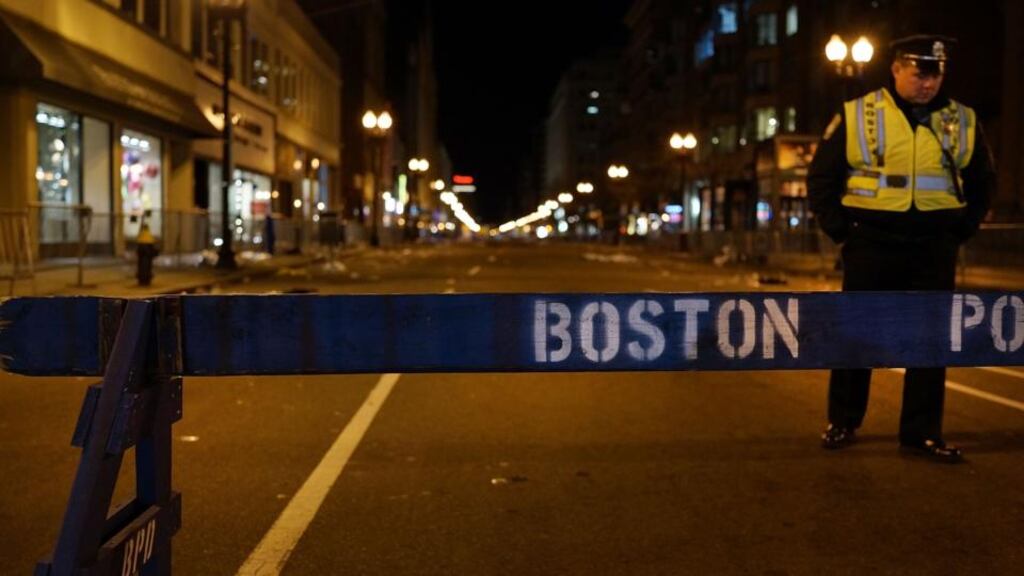The helicopter humming overhead distracted me enough to stop me writing at my laptop. I checked Twitter to see if there were any messages being posted on the social media website that might be able to tell me what was going on near the apartment where I was staying.
Late on Thursday, April 18th Massachusetts Institute of Technology had posted an emergency alert on its website, circulated on Twitter, warning students to “stay indoors” saying there was a shooter on campus. Other messages reported that a police officer had been shot at the corner of Main Street and Vassar Street.
Checking the exact location of the reported shooting – and not knowing the area terribly well – I could see from Google Maps it was just a three-minute drive from where I was staying in Cambridge, between MIT and Harvard, across the Charles River from Boston.
Not realising at the time, like everyone else watching the events unfold, that the incident might have been connected to the Boston Marathon bombings the previous Monday afternoon I jumped in my friend’s car and headed down there to see what was happening. It was not long after 11pm.
I rounded a corner. The far end of the street was basked in the blue wash of flashing police lights. Television news crews had just arrived and press photographers were milling around. Across the road, law enforcement officers huddled in groups behind crime scene tape and police cars.
Little gleaned
Among residents who had gathered were a couple dressed in clothes resembling pyjamas. Giddy with the prospect of being interviewed for television, they were talking to television reporters off-camera about having heard about a man wearing a cowboy hat. It was unclear whether the man they were talking about was a witness or the suspected shooter. After 15 minutes, with little more to be gleaned at the scene I returned to the apartment.
On my drive back the streets were empty except for a few policemen and a sniffer dog searching bushes and behind walls. It was reported the next day that the suspects in the Boston bombings and the MIT cop killing, Tamerlan and Dzhokhar Tsarnaev, returned to their apartment on Norfolk Street – roughly 10 minutes on foot from where I was staying – after the shooting, travelling the same streets I drove.
Soon after my return to the apartment, police cars started speeding along Columbia Street and the adjoining Massachusetts Avenue leading up to Harvard Square, lights flashing. After midnight two explosions could be heard in the distance followed soon after by a third. Something was definitely kicking off.
Again, with the television news struggling to keep up, I turned to Twitter to find out what was going on. There were reports of a car-hijacking, explosive devices being thrown at police during a car chase, a shootout in Watertown, the neighbourhood west of Cambridge, and of another police officer, a transit cop, being shot.
Videos of the fire fight
As the television news, the online editions of newspapers and even the wires laboured to keep pace with the events in the early hours of Friday morning the Twittersphere lit up with first-hand, eye-witness accounts of the gun battle, as-it-happened photographs and videos of the fire fight.
The law enforcement authorities used the social media website to warn Watertown residents to stay indoors and that a suspect was still on the loose. It all fed the frenzy of what was a massive exchange of information playing out in the minute-by-minute drama on computer screens and smartphones.
The tweets and photographs posted by one eye-witness in particular, Andrew Kitzenberg – whose Twitter "handle" (username) is "@AKitz" – are remarkable. After not posting anything for more than a month, he turned to Twitter and used it to report on and photograph the gun battle outside his home on Laurel Street in Watertown.
He captured an astonishing record of the night’s events and, along with other camera and phone-wielding neighbours, helped the media report on the events.
During a week when the main news outlets were responsible for some howlers (CNN and AP erroneously reported that a suspect was arrested on the Wednesday) on-the-ground sources shared information that, once spotted amid the usual ramblings on Twitter, was invaluable to building an accurate story.
First rough draft
Writing on last week's online coverage of the Watertown showdown, Jeremy Stahl, the social media editor of internet magazine
Slate
, expanded on the maxim of former
Washington Post
publisher Philip Graham, saying: "If journalism is the first rough draft of history, then Twitter is the first rough draft of journalism."
This may be a stretch, but Twitter undoubtedly provided vital raw material for journalists. For a story that moved as fast as this, it was the medium that came closest to keeping up.











